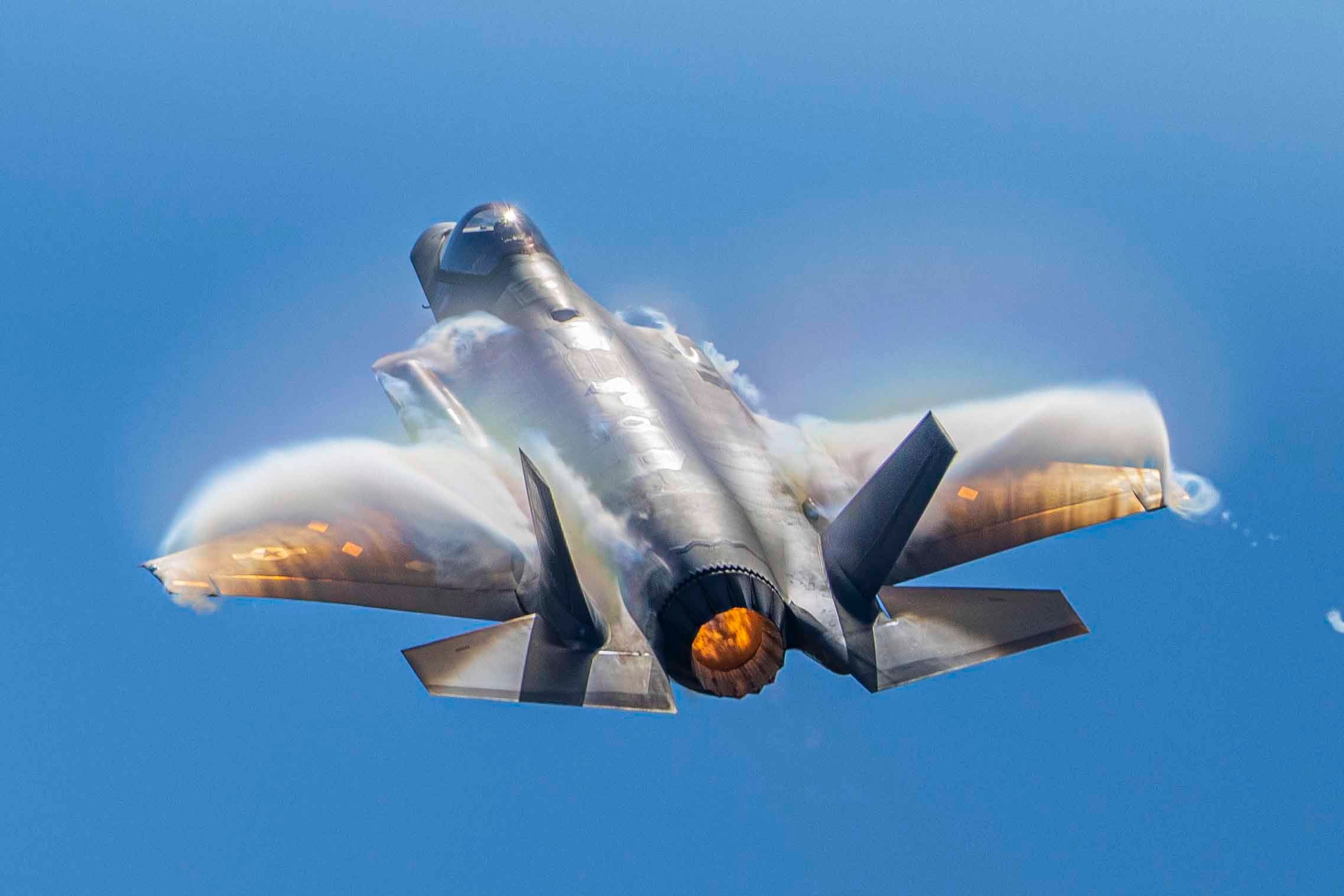WASHINGTON — The first production F-35 Joint Strike Fighter with an early, incomplete version of the software powering a key upgrade was flown last week at Lockheed Martin’s Fort Worth, Texas, facility, the company told Defense News.
The Pentagon’s F-35 Joint Program Office is considering whether a strategy of loading interim versions of the Technology Refresh 3 software into the latest F-35s might provide a way to end a months-long delivery halt, and allow the government to start accepting the latest versions of the fighter.
Technology Refresh 3, or TR-3, is the name for a batch of hardware and software upgrades to the newest F-35s, and include better displays, computer memory and processing power. The TR-3 upgrades are necessary to pave the way for a more expansive modernization, known as Block 4, which will allow the F-35 to carry more long-range precision weapons and improve its electronic warfare capabilities and target recognition.
TR-3 has been stymied by software problems and difficulties integrating it with the new hardware, and its schedule has slipped significantly. It was originally expected to arrive in April but has now slipped until well into 2024, perhaps as late as next June.
Lockheed first started rolling jets with the TR-3 hardware off its Fort Worth production line around the end of July. But because the software was not finished, these fighters could not be taken for the check flights necessary for the Defense Department to accept them.
While the Pentagon has halted deliveries, Lockheed has continued building new F-35s with TR-3 hardware and then storing them at Fort Worth. The JPO refused to tell Defense News how many planes are now parked there, citing security concerns, but Lockheed Martin can build roughly a dozen F-35s per month.
The delay in rolling out the TR-3 upgrades has rankled Rep. Rob Wittman, R-Va., chairman of the House Armed Services subcommittee on tactical air and land forces. Wittman told Defense News in September that while he is hopeful the F-35 program is on a path to fixing the software and resuming deliveries, he planned to push its leadership on how much progress has been made in a hearing by the end of the year.
The JPO confirmed in an email that it’s looking for a way to resume acceptance flights for the latest F-35s before TR-3 is completely finished.
When asked if this might entail using an interim or early release version of the software, the JPO said “potentially,” and that the software could be updated down the line to complete the TR-3 capabilities.
“The JPO and Lockheed Martin are working with the U.S. services and international customers on potential options to deliver operationally acceptable aircraft that would most likely require future software drops for a subset of capabilities to meet all requirements,” the JPO said.
However, the JPO cautioned that no decision on deliveries of F-35s with an early form of the TR-3 software has yet been made by the services, partners and international customers.
A Lockheed spokesperson concurred with the JPO’s responses to Defense News, and added in an email that “The first production F-35 with TR-3 software and hardware took flight in Fort Worth last week.”
The spokesperson said last week’s flight was an initial vehicle system checkout flight, which would be the first in a series of acceptance flights for the fighter. Lockheed’s spokesperson said other TR-3-enabled production F-35s have also flown since the first flight, but would not say how many other than “a few.”
The JPO confirmed the flights that began last week were the first for the production TR-3 models, and said these initial flights will allow the final acceptance flight process to move more quickly once the software is approved for operational use.
Test F-35s with TR-3 are also continuing their flight tests at Edwards Air Force Base in California and Naval Air Station Patuxent River in Maryland, Lockheed’s spokesperson said.
Stephen Losey is the air warfare reporter for Defense News. He previously covered leadership and personnel issues at Air Force Times, and the Pentagon, special operations and air warfare at Military.com. He has traveled to the Middle East to cover U.S. Air Force operations.





